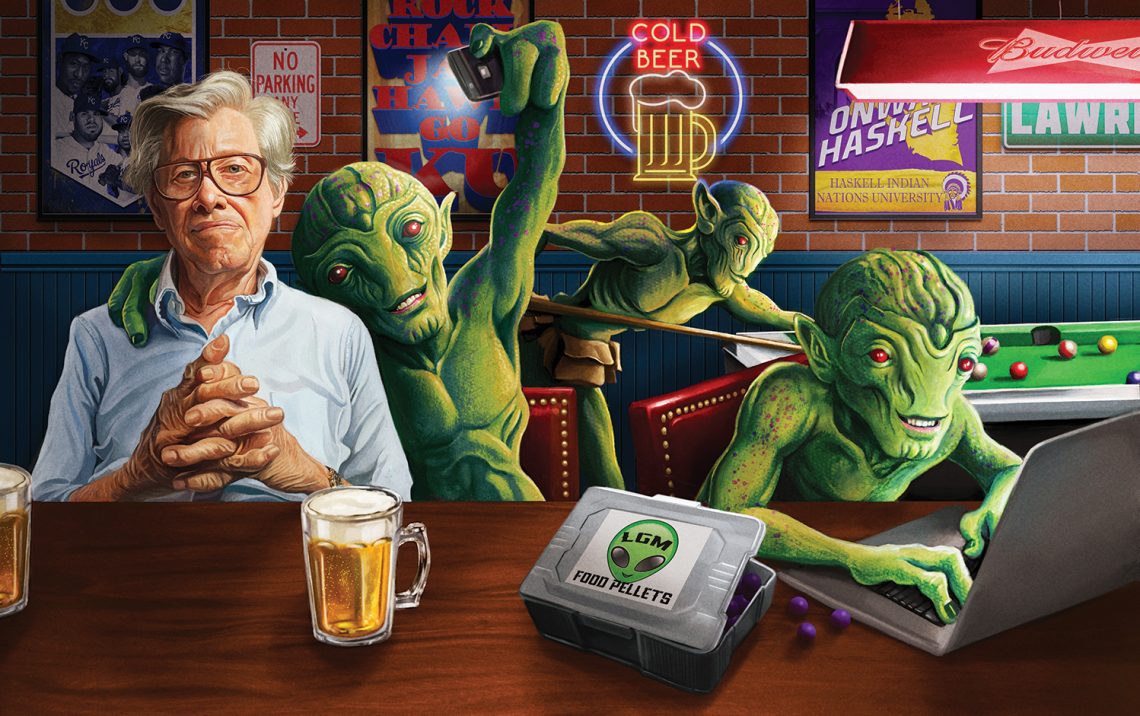
The Aliens of James Gunn
A Lawrence author and science-fiction legend explores the human element of bringing in the aliens.
Story by: Carolyn Kaberline
Illustrations by Torrence Thomas
Without any warning, they appear on Earth and launch an attack. After all, that’s what aliens do again and again in science fiction. But the aliens in James E. Gunn’s short story “The March of the Little Green Men” mount a different type of offensive.
For starters, they don’t annihilate people with laser beams. They don’t subjugate the human race. They don’t ask to be taken to Earth’s leaders. In fact, they couldn’t care less who the leader is.
When they make contact, they brush off the humans’ repeated requests to share the secret to immortality or at least the keys to hyperspace. Instead, the little green men tour museums, concert halls and other global attractions, all the while remaining cosmically indifferent to the prospect of conquering Earth or, failing that, giving humans a helping green hand.
Only at the end of the story, as the world-weary aliens depart, do they reveal their mission: They came looking for stories—and hoped to find some little green women. “I wanted to look at all the clichés. The term ‘little green men’ itself is a cliché,” Gunn says of his 2017 short story published in the anthology Little Green Men—Attack! edited by Robin Wayne Bailey and Brian Thomas Schmidt.
At 96 years of age, the Lawrence resident and University of Kansas professor emeritus is often described as a “don” or “grandfather” of science fiction. Since his first sci-fi work was published in 1949, Gunn has won one of the genre’s top prizes, the Hugo Award; received the “Damon Knight Memorial Grand Master” title from his peer members of the Science Fiction & Fantasy Writers of America; and been inducted into the Science Fiction & Fantasy Hall of Fame. His works include an official Star Trek novel, an acclaimed space-epic trilogy and, as recently as 2018, the authoritative third edition of Alternate Worlds: The Illustrated History of Science Fiction.
That latter work is a good introduction to understanding Gunn’s approach to writing about aliens. Reading through Alternate Worlds, one can see how much of midcentury science fiction was dominated by variations on the “aliens attack!” scenario. Often these aliens were reptilian, cephalopodic, ghastly-blobbish or otherwise hideous; sometimes they were other-worldly babes in space-suit bikinis. Whether they were freaks or fetishes, these alien creatures—and human contact with them—drove the plot of many midcentury sci-fi novels.
This was, indeed, an era of “pulpish gosh-wow-oh-boy trappings,” says Robin Wayne Bailey, author and past president of the Science Fiction & Fantasy Writers of America. But at the same time, Bailey notes, there was always a branch of writers more interested in using “aliens and alien civilizations to hold up mirrors to humanity”—and Gunn was one of the best of these. “What Jim Gunn brings to the field,” Bailey says, “is a finely nuanced talent and the true eye of a skilled observer.
Gunn is not a bombastic writer. His work is not filled with sprawling space battles or exploding planets. There are no Death Stars. His work feels quieter, almost pastoral, even when writing about distant worlds or stations in space. It’s an approach and an outlook I’ve attributed to his life and experiences in Lawrence, and that outlook is what makes him a rather unique voice—and a long-lasting one.”
To be sure, Gunn has written his own alien-blob tales, but even early in his career, he departed from the standard formula. For example, in his 1954 short story “A Monster Named Smith,” a black blob escapes from an alien sheep-like creature undergoing an autopsy after it is brought back to Earth. “The body is in the examination room, on the dissecting table, within minutes after landing. But before we can make an incision, something starts oozing out from under it. A black blob,” explains one of the story’s human narrators. On the lam, the blob must find a new host and evade the scientists hunting it down. However, once it finds an unsuspecting human, it doesn’t use the host body to slaughter people or to signal its own kind to take over Earth. Instead, it struggles to learn how to be a human, how to fit in with the world, not as a cosmic spy but as just one more socially awkward human.
Gunn describes this as “one of the few early stories told from an alien’s viewpoint,” but its ultimate focus is on humans encountered by the blob. “Its form is determined by its being able to join inconspicuously with a human so it can explore what it means to be human from an alien viewpoint,” Gunn explains.
Aliens appear again in Gunn’s Transcendental series from 2013–2017. As a futuristic Canterbury Tales, the trilogy presents pilgrims from numerous worlds seeking to find a “Transcendental” machine that will recreate them—but without their frailties. In these stories, Gunn introduces the elephant-like Tordor, the sentient flower 4107, the weasel- like Xi, and the coffin-shaped Trey to name just a few. But again, in Gunnsian fashion, the world-building of alien creatures and civilizations is a means to understand our own. “I wanted to deal more universally with the human experience when humans encounter a galaxy already inhabited and governed by aliens of various kinds and shapes,” Gunn explains. “I had to imagine a future where such a Transcendental machine might be discovered and the fundamental need of sentient creatures to want to evolve from their natural state to a more perfect form. The machine is both a promise and a danger to the whole galaxy.”
Gunn also explains that in depicting alien development he looked to the late Larry Martin, a renowned paleontologist at KU, who talked about the way humanity was shaped by climate and location. When ape-like creatures left the forests for the savannahs, they had new challenges to face. Instead of humans inventing tools to manage their environment, it was the tools that invented humans. There was a need for different mental capacities: those who could use tools had a better chance to survive.
“I looked at the forces that shaped human experience and applied it to others,” Gunn explains. “Each of these is typical of the evolutionary process. I imagined ways different aliens would have a common experience of struggling through difficulties into a condition of being intelligent while being subject to the pressures of their cultural and biological differences.”
In an email exchange about his former mentor, Kansas native, KU grad and award winning science-fiction author Bradley Denton writes that Gunn is among a significant group of authors who have always been able to go beyond “fear-based trope stems” in writing about aliens and approach the question with “a more fully science-fictional mindset.”
I recall being in a class taught by Jim Gunn in the early 1980s during which one of my classmates began pointing out all the ways in which the human race was likely to self-destruct. And while I can’t recall the exact words, I do recall that my classmate asked Professor Gunn something like, “Do you really think the human race can save itself ?” And Professor Gunn, in his usual calm, genial tone, replied, “Oh, perhaps not. But that doesn’t mean we shouldn’t try.”
That same mindset is at work, it seems to me, whenever James Gunn’s fiction asks questions such as, “Is transcendence possible? Could human beings and
aliens ever truly understand each other? Can human beings ever truly understand themselves?’” And the stories answer: “Perhaps not … but that doesn’t mean we shouldn’t try.” And so do the aliens in Gunn’s stories. They probably won’t fully understand people—but they try. Regardless of shape, size or origin, Gunn’s other-worldly creatures encounter us across a colossal gap that is not space-age indifference, but instead an acknowledgment that humans, first and foremost, have age-old people issues to contemplate and resolve. The first contact will always be with ourselves.
“I’ve tried to use aliens to find the way the universe operates and our place in it,” Gunn says.
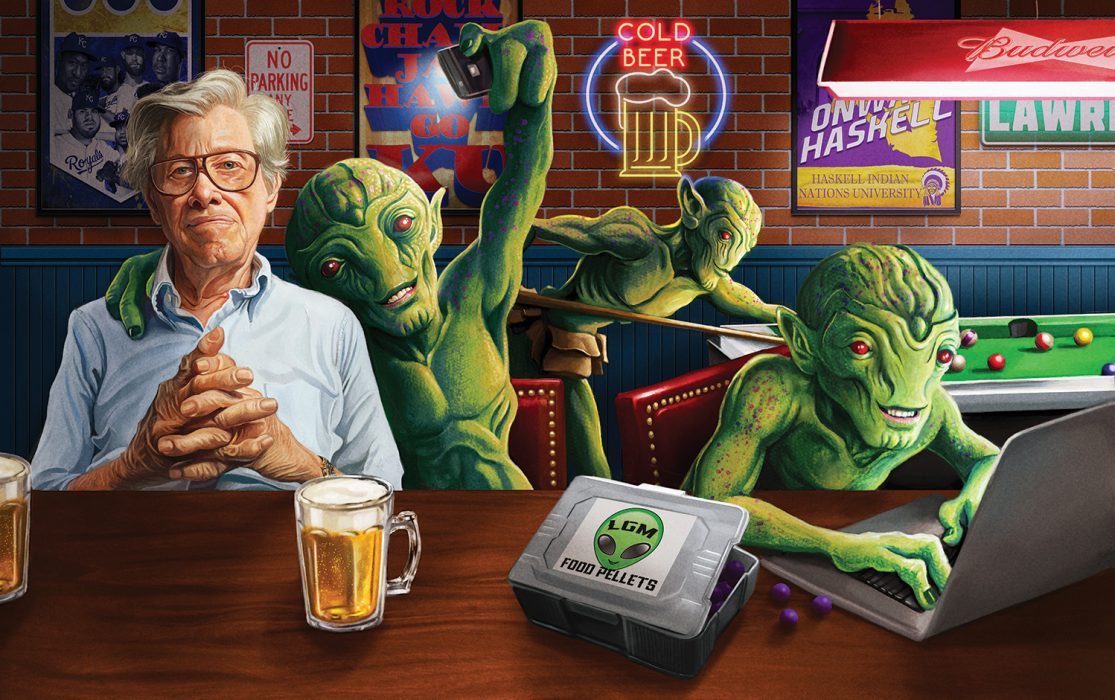
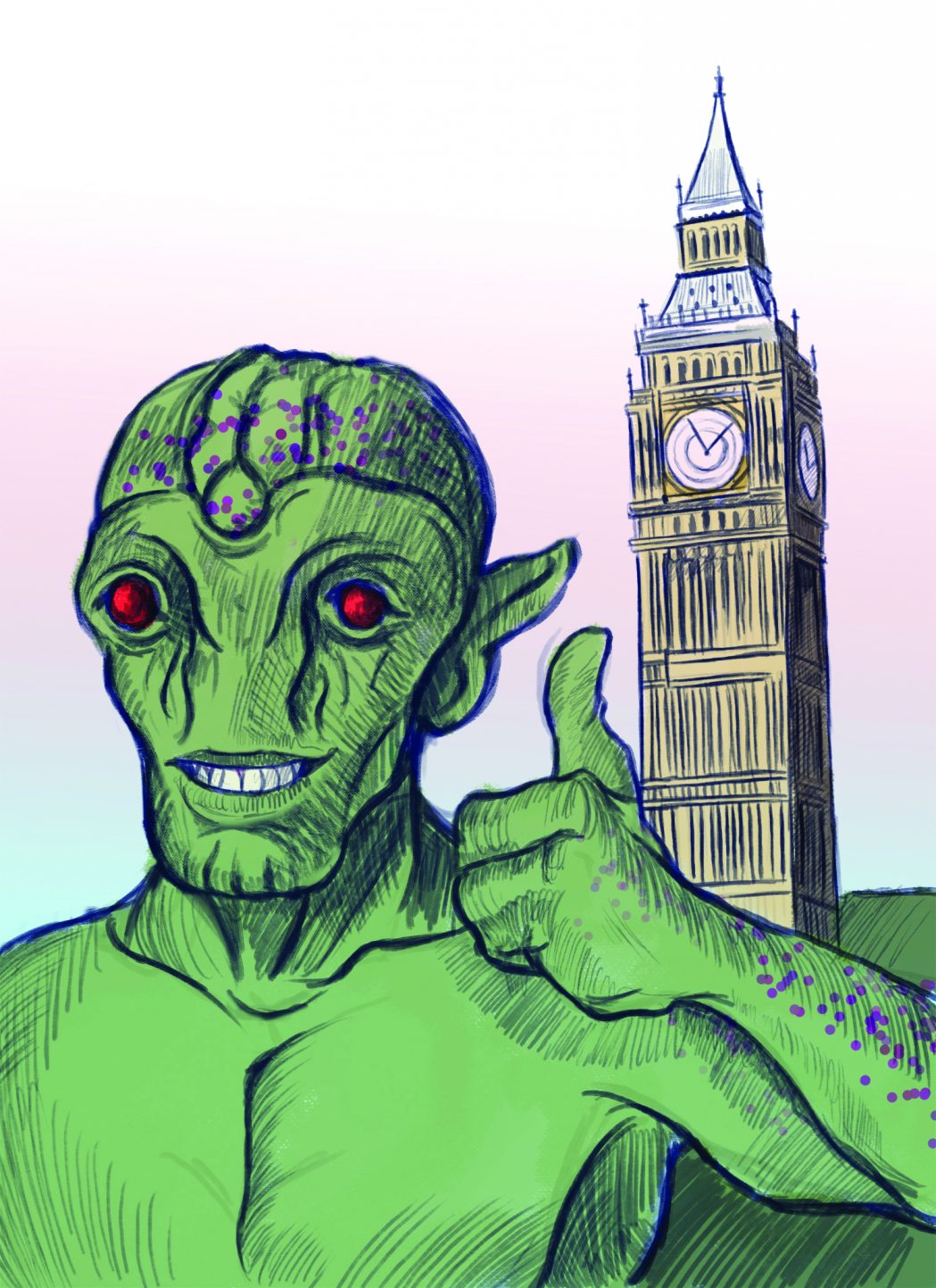
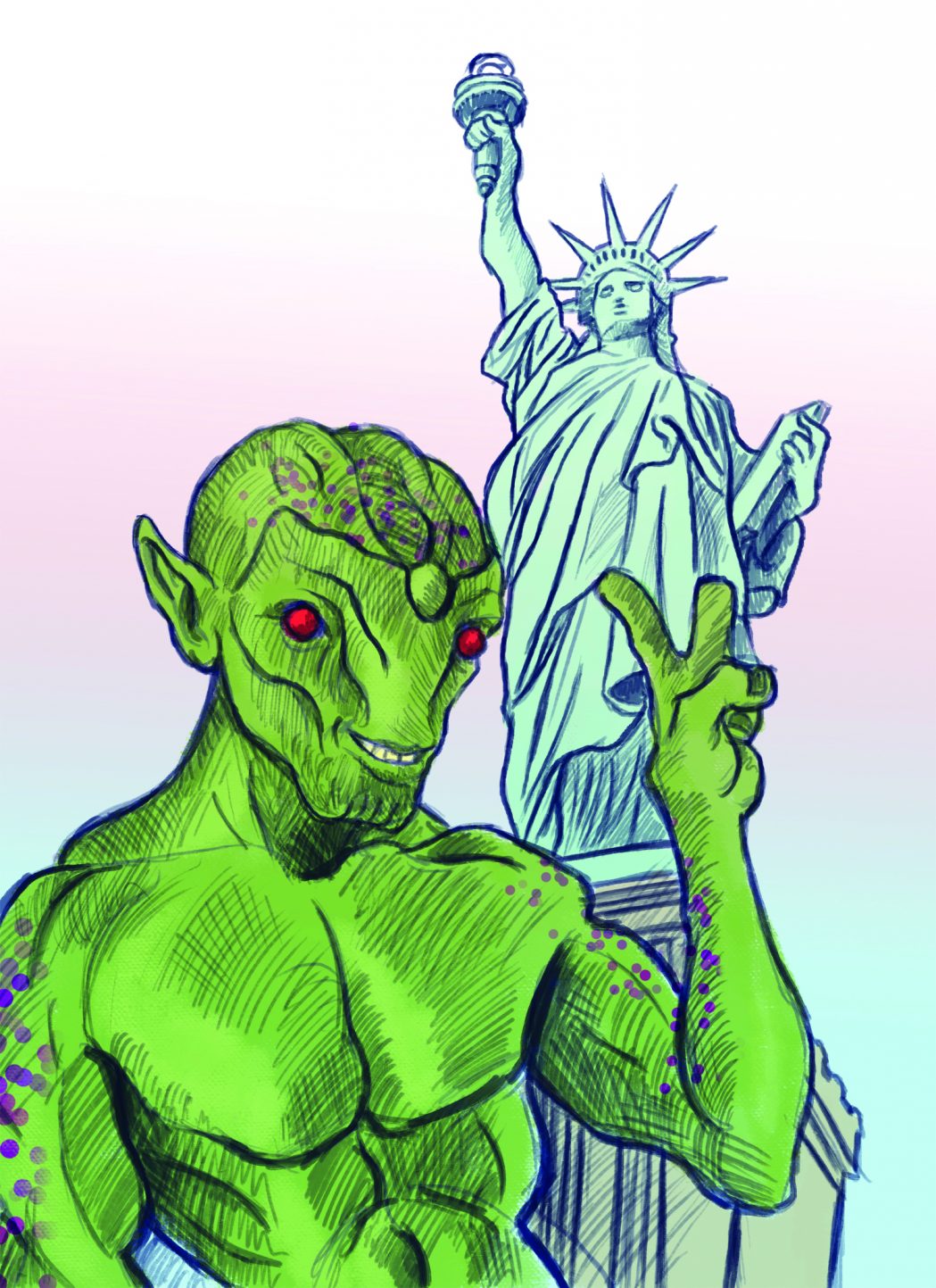
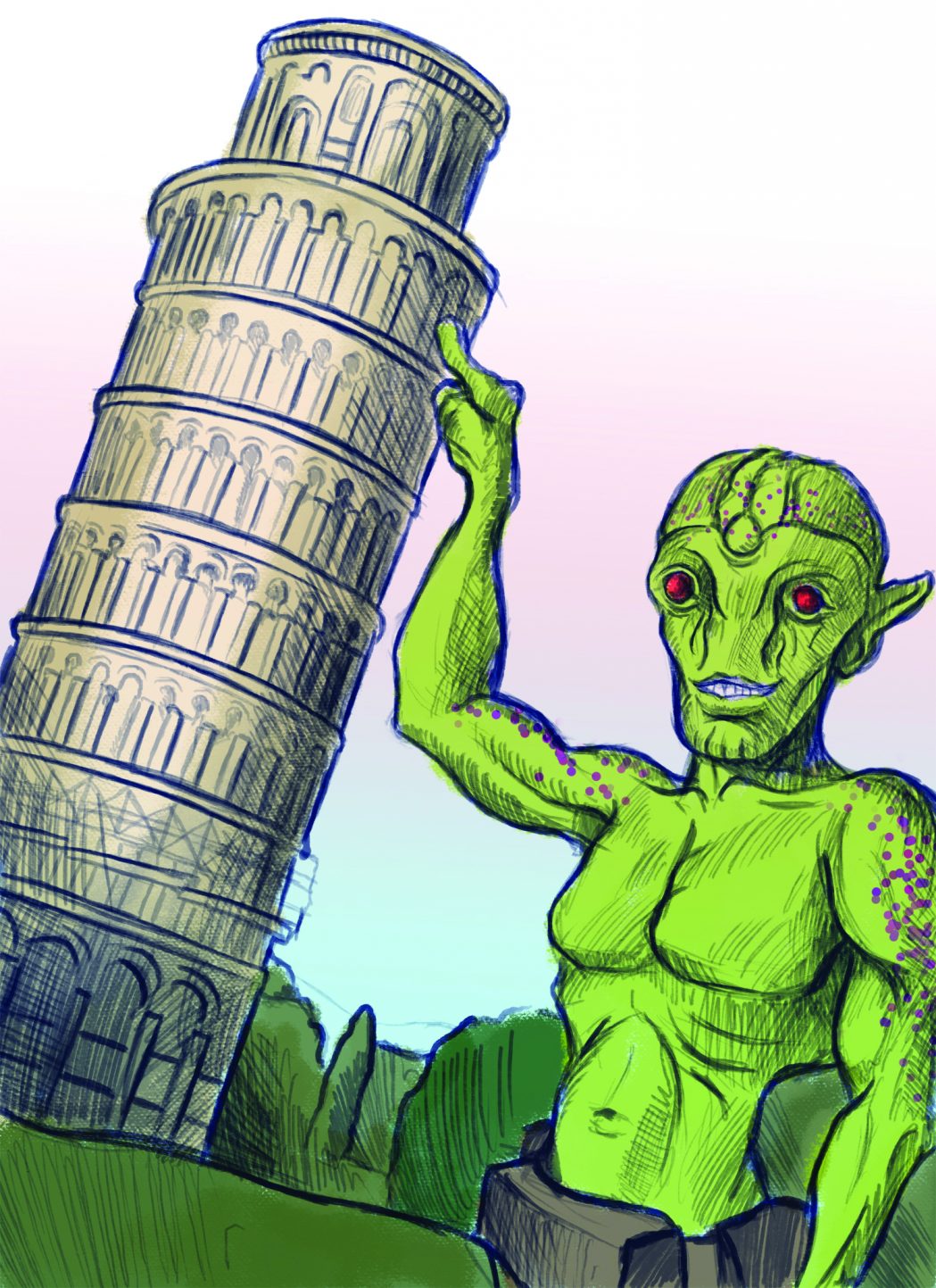


You May Also Like

Patriotic Dissent
November 11, 2020
See Douglas County
June 30, 2021
